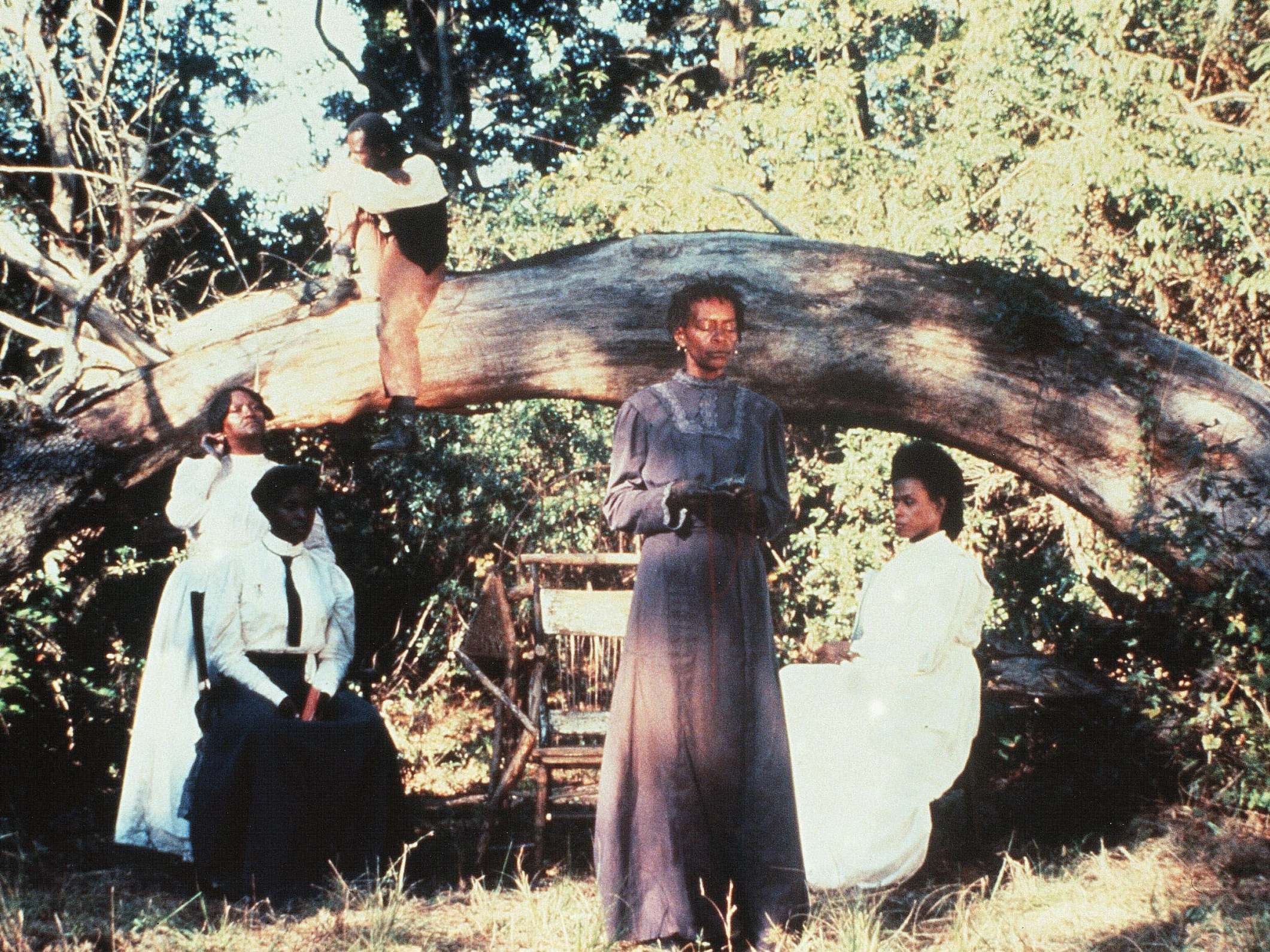The Indy Film Club: How Daughters of the Dust influenced Beyoncé’s Lemonade
Julie Dash’s debut was the first film directed by a black woman to receive a general theatrical release in the US. Clarisse Loughrey explores its legacy


In Beyoncé’s Lemonade, her historic 2016 visual album, a portrait of black femininity is presented as a series of romantic vignettes. Black women in long, white dresses – embellished with lace and high collars – sit perched in mossy trees, engaged in quiet communion. Processions of black women make their way across untouched beaches, towards the unspoken promise of rebirth and regeneration beneath the ocean’s waves. There is immense beauty in how still and serene these moments are, as the women sit in communication with past traditions and the ancient roots of nature.
Critics were quick to point out that these tableaux are drawn directly from 1991’s Daughters of the Dust, writer-director Julie Dash’s masterful, often overlooked debut film. Set in 1902, it invokes the Gullah culture of the Sea Islands, which sit off the coast of the southeastern United States. It belongs to the descendants of enslaved people transported from central and western Africa, brought to the islands to work the rice, cotton and indigo plantations. Cut off from the mainland, the Gullah people were better able to preserve their African heritage and developed a creole language of their own, also called Gullah. Dash was inspired by experiences of her own father, whose family migrated from the Sea Islands to New York City in the early 20th century.
Daughters of the Dust focuses on the fictional Peazant family, who face a crucial moment in their own history – they’ve decided to leave the islands for the industrialised North, hooked on the promise of economic prosperity and cultural modernity. Some, however, are determined to stay behind. Rifts begin to form: Haagar (Kaycee Moore) heads up the leaving party, while her daughter Iona (Bahni Turpin) longs to stay behind with her secret love, a Cherokee boy named St Julien Lastchild (M Cochise Anderson).
Meanwhile, two cousins already settled on the mainland return for a farewell feast of shrimp gumbo and johnnycake, a cornmeal flatbread. Viola (Cheryl Lynn Bruce) arrives from Philadelphia with a Bible in hand, now a fervent Baptist. Yellow Mary (Barbara-O) retreats behind her bridal-like veil – the Peazants have denounced her as a “ruint” woman, a sex worker and wet nurse who arrives now with a mysterious young lover in tow (Trula Hoosier). Arthur Jafa’s cinematography captures this family reunion in hazy, dreamlike tones. Under the rays of the afternoon sun, white dresses and pale sands give off an angelic glow.
Unsurprisingly, Hollywood executives showed little interest in Dash’s nuanced, contemplative script. She eventually made the film for only $800,000, using funds sourced from public broadcaster PBS. But it didn’t take long for the praise to come flooding in. Jafa won the Best Cinematography prize at the Sundance Film Festival, while critics declared it a “revelation” and “a film of spellbinding visual beauty”. When it first premiered in New York, it proved a sell-out success. As a result, Daughters of the Dust became the first film directed by a black woman to receive a general theatrical release in the United States. But this film – directed by a black woman, centred on the lives of black women – was labelled as a fluke. Dash never made another feature. Instead, she’s worked steadily away from the spotlight, on television, commercials, and music videos.
It’s a great loss to cinema. There is a need for films like Daughters of the Dust, which completely rejects the traditional, linear storytelling of the west in favour of something more lyrical. In an interview from 2016, Dash noted: “In [diasporic] culture we’re not binary, we speak in rhythms and sensibilities, we’re circular.” Past and present create a dialogue with each other, interweaving and interlocking at key moments. There are two narrators in the film. One is known as the Unborn Child (Kay-Lynn Warren), the future daughter of Eli (Adisa Anderson) and Eula (Alva Rogers), who sometimes appears as a spirit darting in and out of frame. The other is Nana (Cora Lee Day), the elder matriarch, who dutifully upholds the old rituals. “We are two people in one body. The last of the old and the first of the new,” she says, in reference to the Unborn Child. She views the migration as a threat – a potential severance of the bonds of family history.
While past and present tussle at the surface, the thrum of trauma lies steady beneath them. Older members of the family, the last generation to have lived under slavery, have had their hands permanently stained by indigo dye – an unshakeable reminder that the slave trade, amongst its many crimes, turned human beings into cogs in a machine. Eula was raped by a white landowner; she and Eli live in fear that Unborn Child might not be his. We watch as the Peazants wrestle with the burdens of their own history. Can they sail away from it to a new life? Can it be left behind? What might they lose in the process? Viola and Yellow Mary represent a possible future, but offer no answers. But Dash embraces the uncertainty. Daughters of the Dust was always about the conversation, not the conclusion.
Join our commenting forum
Join thought-provoking conversations, follow other Independent readers and see their replies
Comments
Bookmark popover
Removed from bookmarks